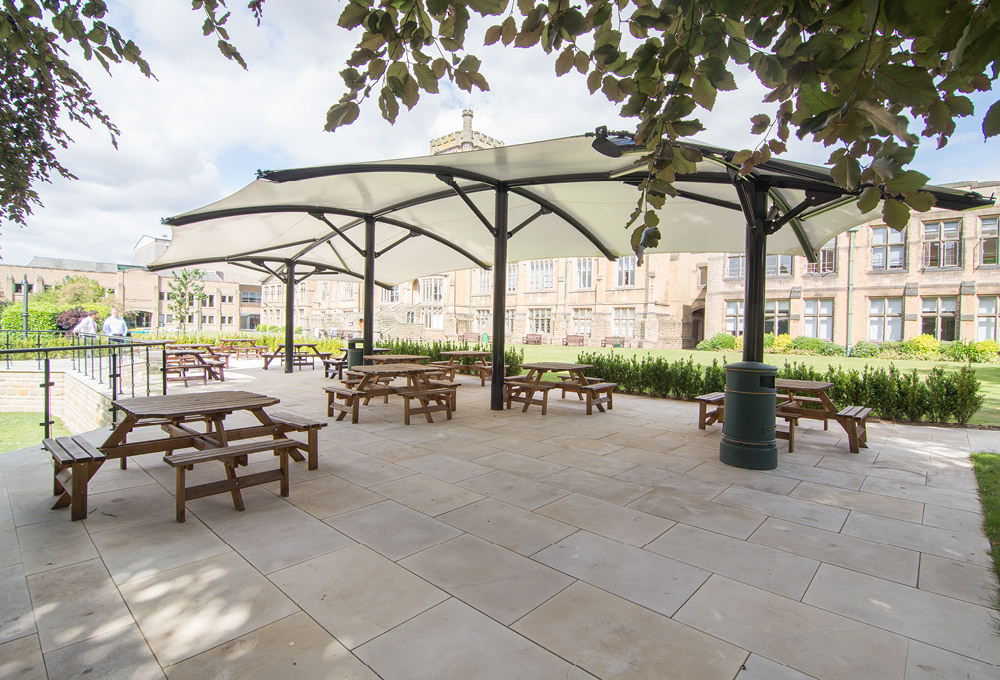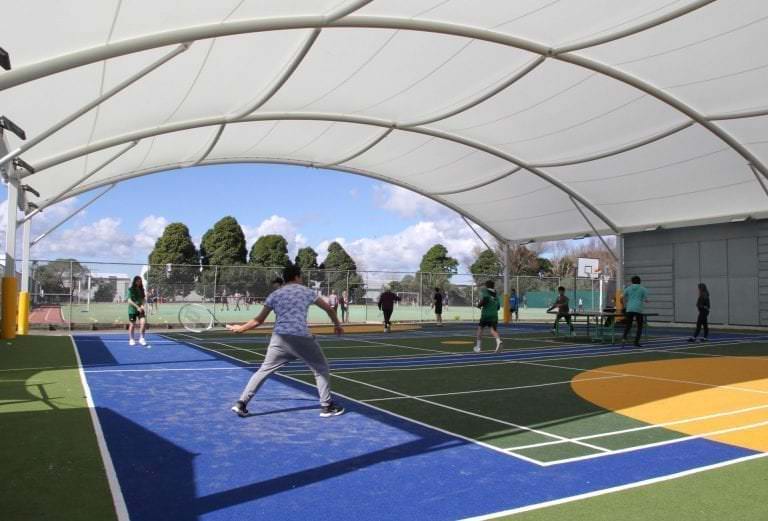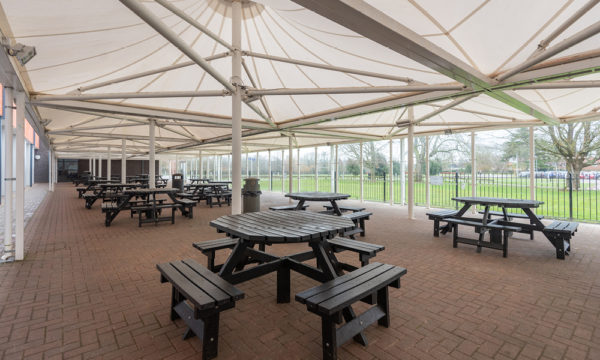
Canopies & Walkways
- All Canopies & Walkways
- Fabric Canopies
-
Polycarbonate Roof
Canopies - Covered Walkways
- Enclosed Canopies
- MUGA Canopies
- Timber Canopies
- Entrance Canopies

Tensile Fabric Structures
Tensioned or tensile fabric structures are canopies that feature cabling or wiring that helps provide crucial support to a building structure by tensioning in the membrane system. This kind of system can exist in many different forms, though it is based on the basic builds known as the Cone and the Saddle. It can be used to create eye-catching architectural structures, offering various structures for roofs and free form designs. As the fabric tensions, all creases are removed and it is strengthened to cope with adverse weather conditions and protect against damage.
The flexible design aesthetic of a tensile fabric structure comes from the distinctive elegant form unique to those characteristics of membrane tension. In daylight, fabric membrane translucency offers soft diffused naturally lit spaces, while at night, artificial lighting can be used to create an ambient exterior luminescence.
When & where can tensile fabric structures be used?
These are ideal when you need a large sheltered or shaded area for a wide variety of applications. As they use less material than conventional structures, they are more lightweight and easier to move from one location to another. Aside from the practical benefits, tensile fabric structures can also be a great option for creating an aesthetically pleasing focal point whilst complimenting surrounding buildings or development. Below are some typical scenarios where our customers require these structures:
 Go to online estimator
Go to online estimator
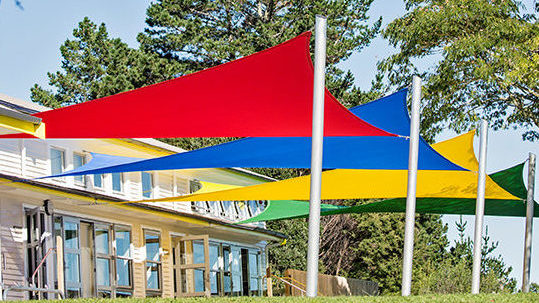
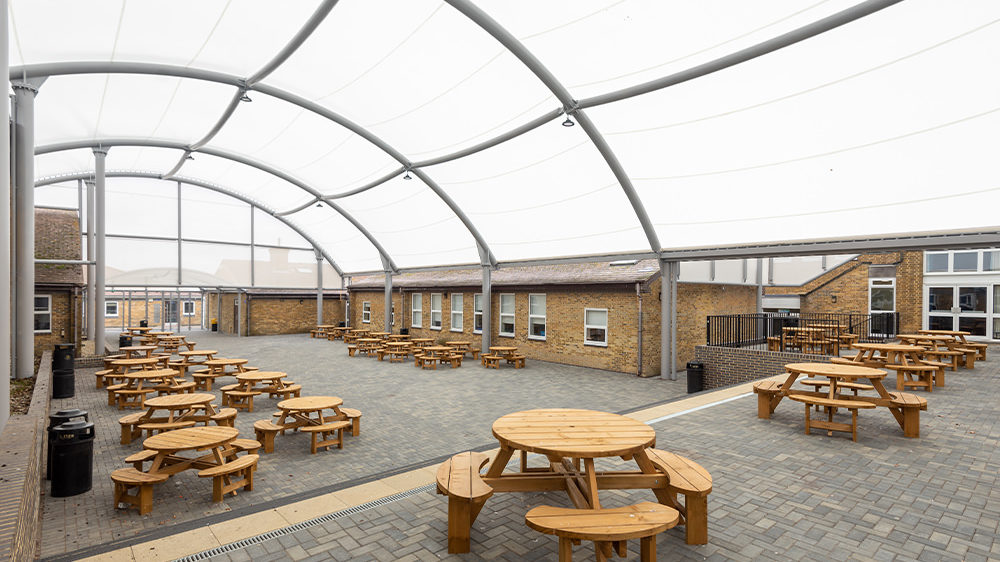
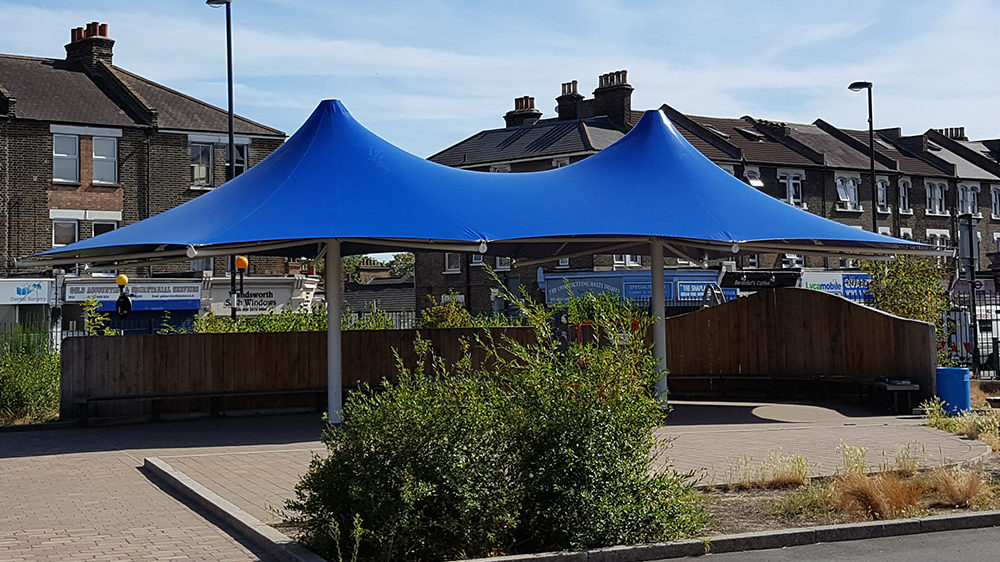




What are the fabrics used?
Whilst it is true that all fabrics can be used to create tension by pulling them in opposite directions, they all exhibit very different characteristics from one another. Tensioned fabric structures utilise four types of fabric at the moment, including:
Can tensioned fabric structures be formed into any shape?
All canopies use the principles and curves of either the Cone or Saddle, or a combination of both. The Cone resembles a volcano and has radial geometry formed with hoops and radians. The Saddle is a surface with two low points and two high points, also referred to as a hyperbolic paraboloid. The surface is created by taking a rectangular grid and warping it or by making it orthogonal (meet at right angles). Similarly to the use of the square and circle in classic architecture, the Saddle and Cone can be combined to produce a limitless amount of possible permutations.
Are tensioned fabric structures eco-friendly and sustainable?
Tensioned fabric structures normally use light-toned roofing to ensure that as little heat is attracted to them as possible. They utilise small volumes of materials over large lengths and areas, utilising the Venturi effect for natural ventilation and providing natural daylighting through translucency. The supplier can, when necessary, recycle ETFE foils, Polyolefin fabrics, Expanded PTFE and PVC polyester for use in lower grade applications.
What is the cost of tensioned fabric structures?
A fully installed tensile is priced per square metre. The cost includes everything from the fittings, cables, supports and groundworks. The price can vary considerably though, depending on how complex the design is, the quality of connections and materials, the snow and/or wind conditions in the local area and the size of structure that is required.
